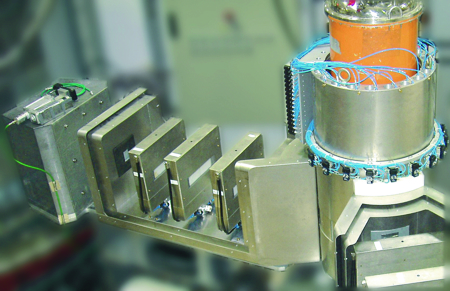The neutron spin echo (NSE) technique is a smart tool used to drastically enhance the energy resolution of neutron spectrometers. This enhancement is made possible by the use of "Larmor encoding", thanks to which the velocity of each neutron is determined through the precession of its spin in well-controlled magnetic fields. Despite the power of this technique, a classical NSE spectrometer where solenoids are used does not allow for the measurement of dispersive excitation lifetimes, i.e. whose energy depends of the wave vector.
This drawback can be surpassed by replacing the solenoids with a series of rotational radiofrequency flippers, which produce a combination of static and radiofrequency fields. Within the framework of a European network, the CEA and the ILL have recently developed such a NRSE option for three-axis spectrometers, the kind of spectrometers that is particularly adapted to the measurements of dispersive excitation lifetimes. Special attention has been paid to the optimisation of radiofrequency flipper coils.
The obtained spin-echo energy, which is the characteristic figure of the device, is 5µeV for neutrons of 14meV of incident energy: the spectrometer resolution is enhanced by almost two orders of magnitude, at the expense of only a 7-fold intensity loss. The measurement of the excitation lifetimes is thus possible, and the method has already been successfully applied to the following compounds: Sr1
4Cu
24O
41 (spin 1/2 chains and ladders), CuGeO
3 (spin-Peierls) and BaNi
2(PO
4)
2 (2D XY anti-ferromagnet).

The “rotational radiofrequency flippers” mounted on IN22 spectrometer